From Unexceptional to Unforgettable: How Fatherhood Programs Can Engage Clients Using Behavioral Science

Fatherhood programs typically offer services to help fathers improve their relationships with their children, find stable employment, enhance their parenting skills, and overcome other challenges they may face. This infographic uses before-and-after examples to demonstrate how programs can use lessons from behavioral science, which studies how people process information and make decisions, to improve the effectiveness of communications to fathers.
Below are examples of four common ways fatherhood programs communicate with fathers (emails, flyers, text messages, and social media posts), along with suggested ways to improve each based on insights from behavioral science. In the revised versions, callouts highlight where specific techniques are used. These techniques include:
- Personalization: Use individually tailored information to convey significance and relevance.
- Simplification: Cut unnecessary information or remove nonessential steps that make a process more difficult.
- Implementation prompts: Lay out the steps needed to complete a task.
- Visual appeal: Make materials attractive and direct the reader’s focus to important information.
- Call to action: Encourage readers to take a specified action.
Before (standard, not informed by behavioral science)
This is an example of a standard introductory email sent to fathers who request more information about a fatherhood program.
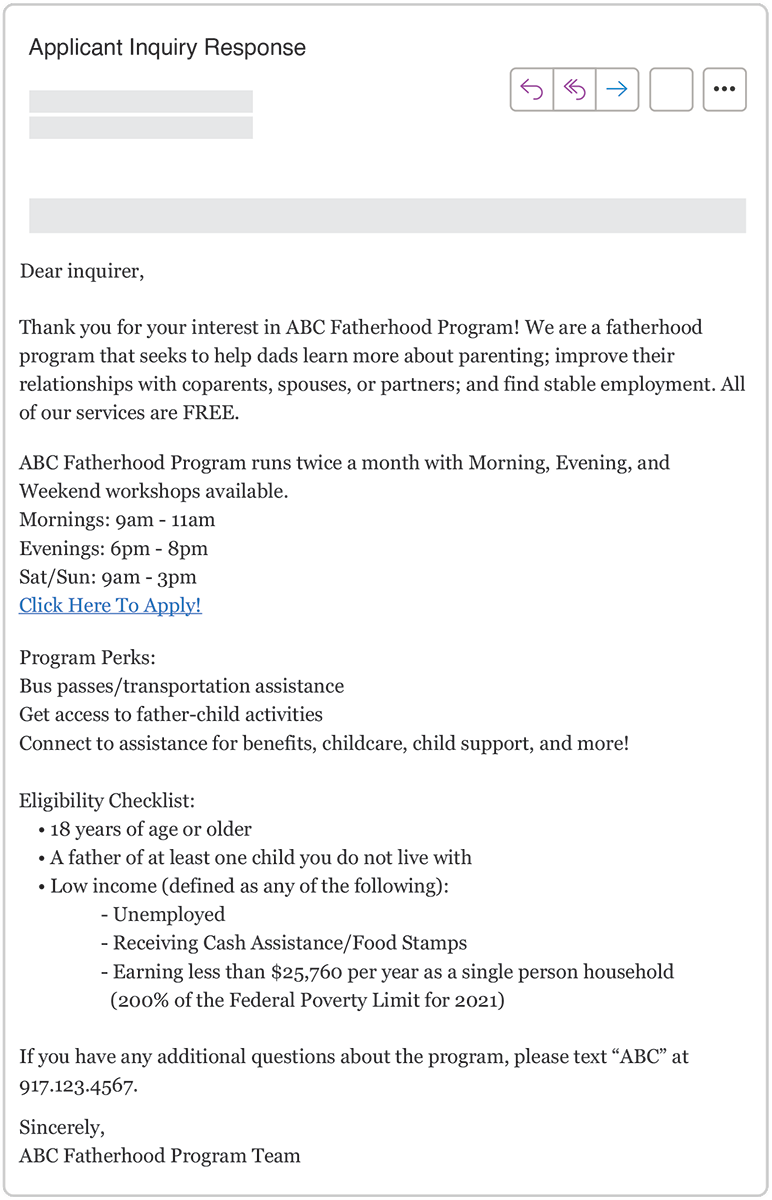
After (informed by behavioral science)
This email incorporates concepts from behavioral science that have been shown to strengthen the effectiveness of communications, with the aim of motivating fathers to apply to join the program. Programs may consider using elements of the email for other communications such as letters and website posts. The email also includes visual design elements that make it more attractive to recipients and increase the likelihood it is read and understood.
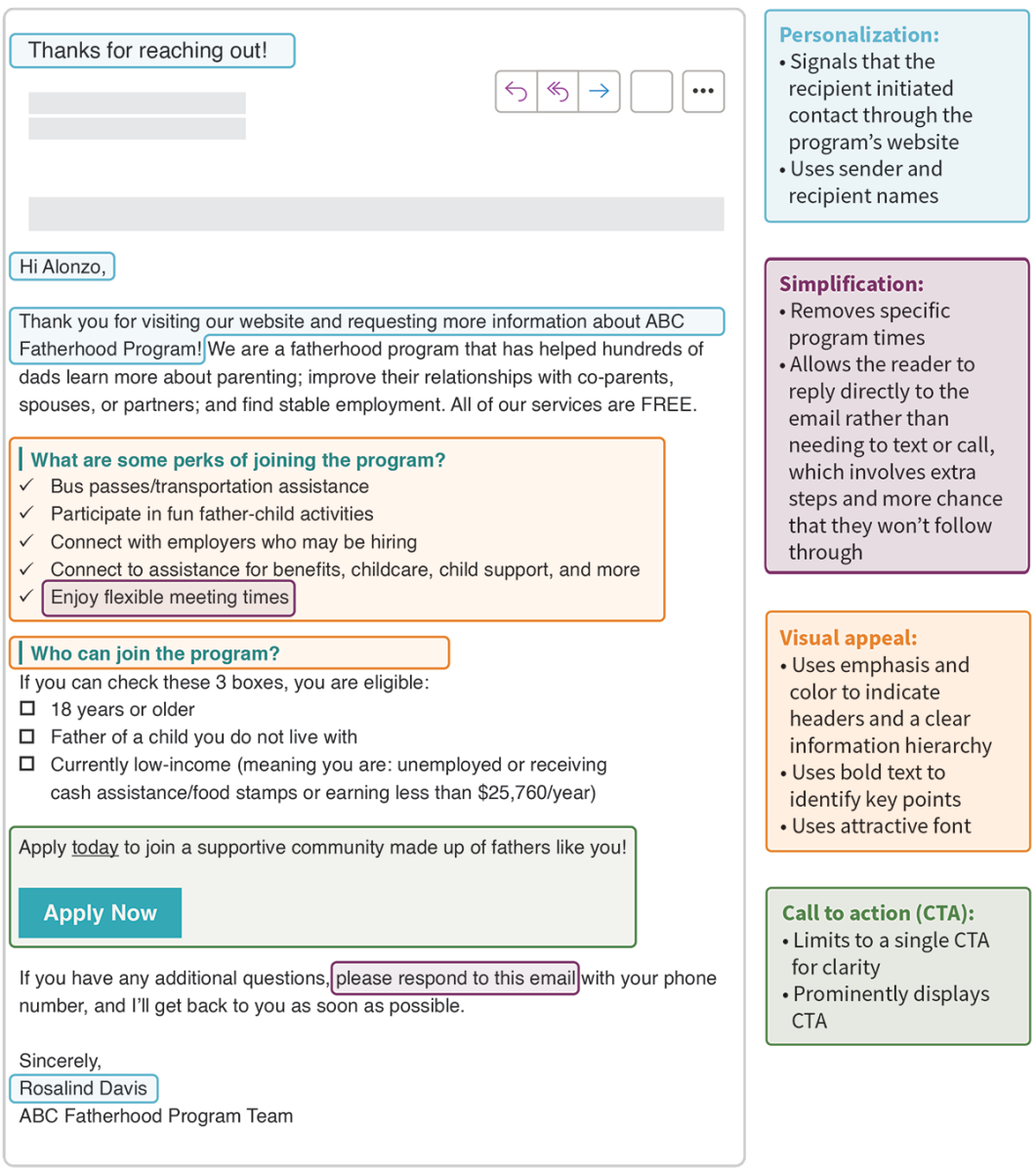
Flyer
Before (standard, not informed by behavioral science)
This is an example of a standard flyer about a program that specifically targets fathers who have had recent involvement with the legal system.
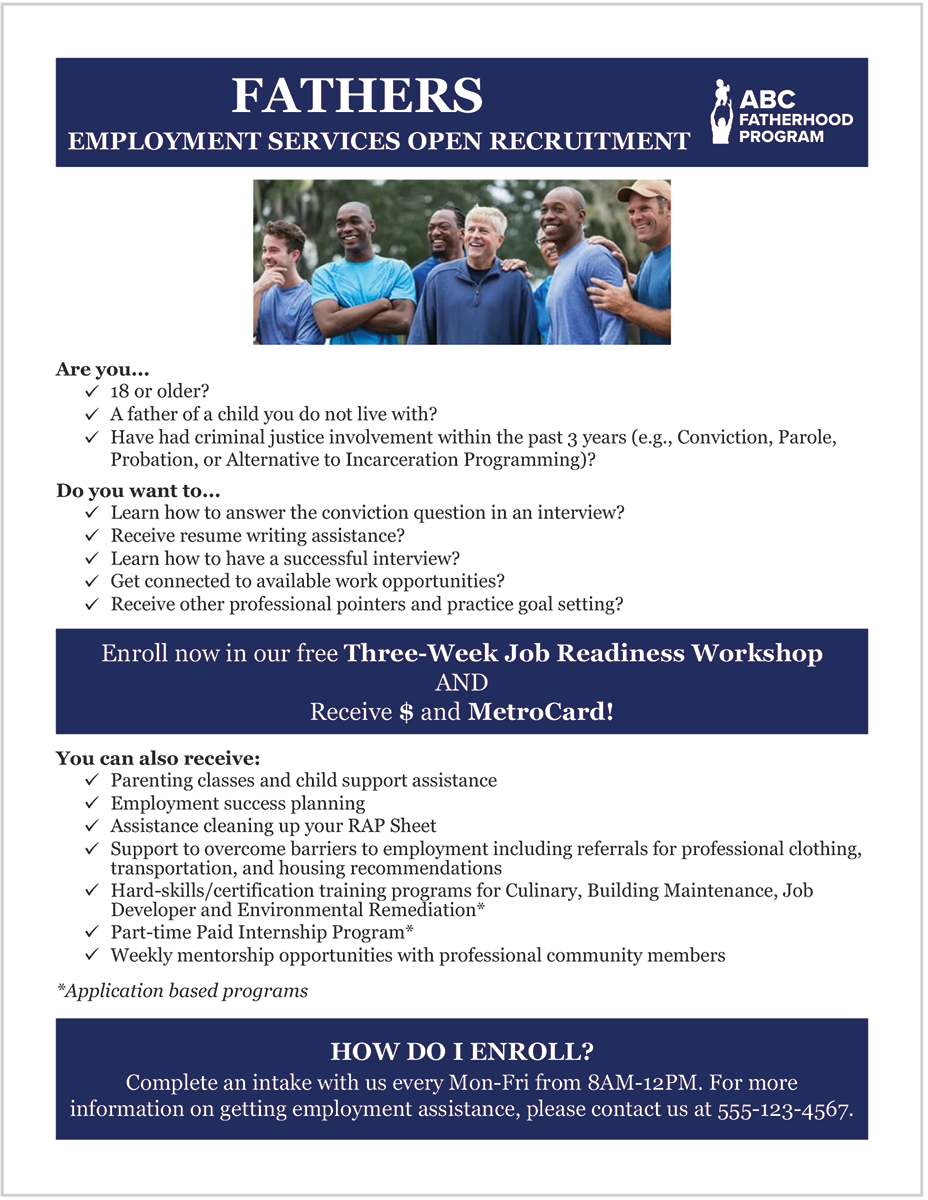
After (informed by behavioral science)
This flyer incorporates concepts from behavioral science that have been shown to strengthen the effectiveness of communications.

Text Message
Before (standard, not informed by behavioral science)
This is an example of a standard text message sent to fathers informing them about an upcoming job fair hosted by a fatherhood program.

After (informed by behavioral science)
This text message incorporates concepts from behavioral science that have been shown to strengthen the effectiveness of communications.
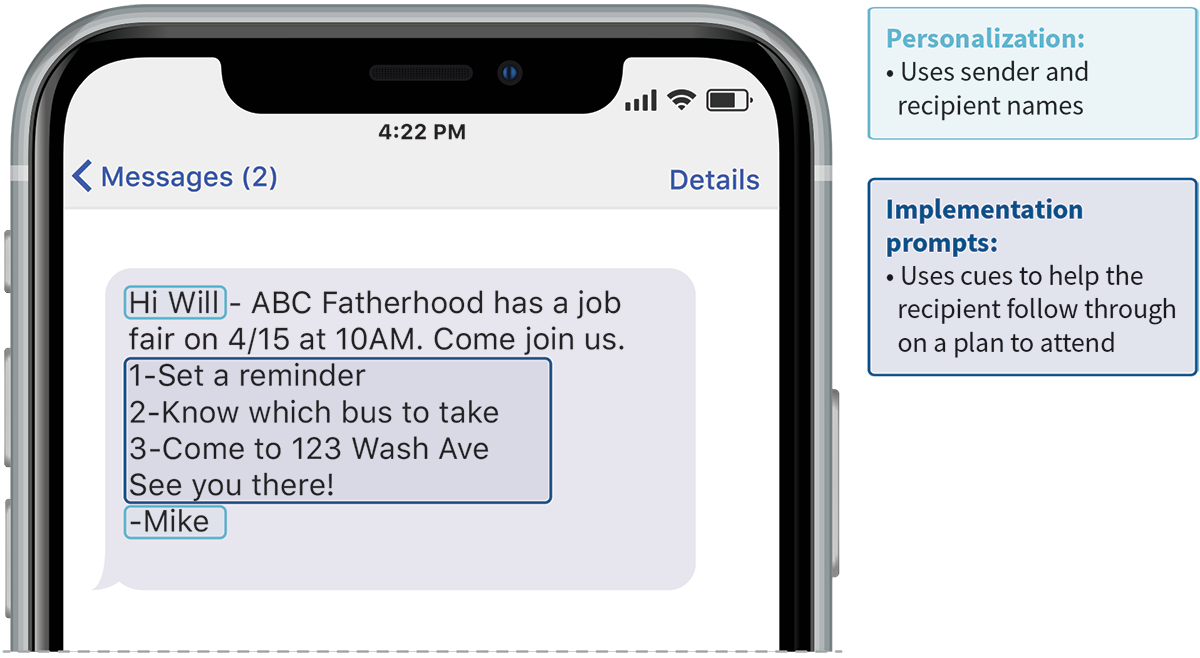
Social Media Post
Before (standard, not informed by behavioral science)
This is an example of a standard social media post shared by fatherhood programs on platforms such as Instagram or Twitter. The post aims to inform fathers about an upcoming online event.
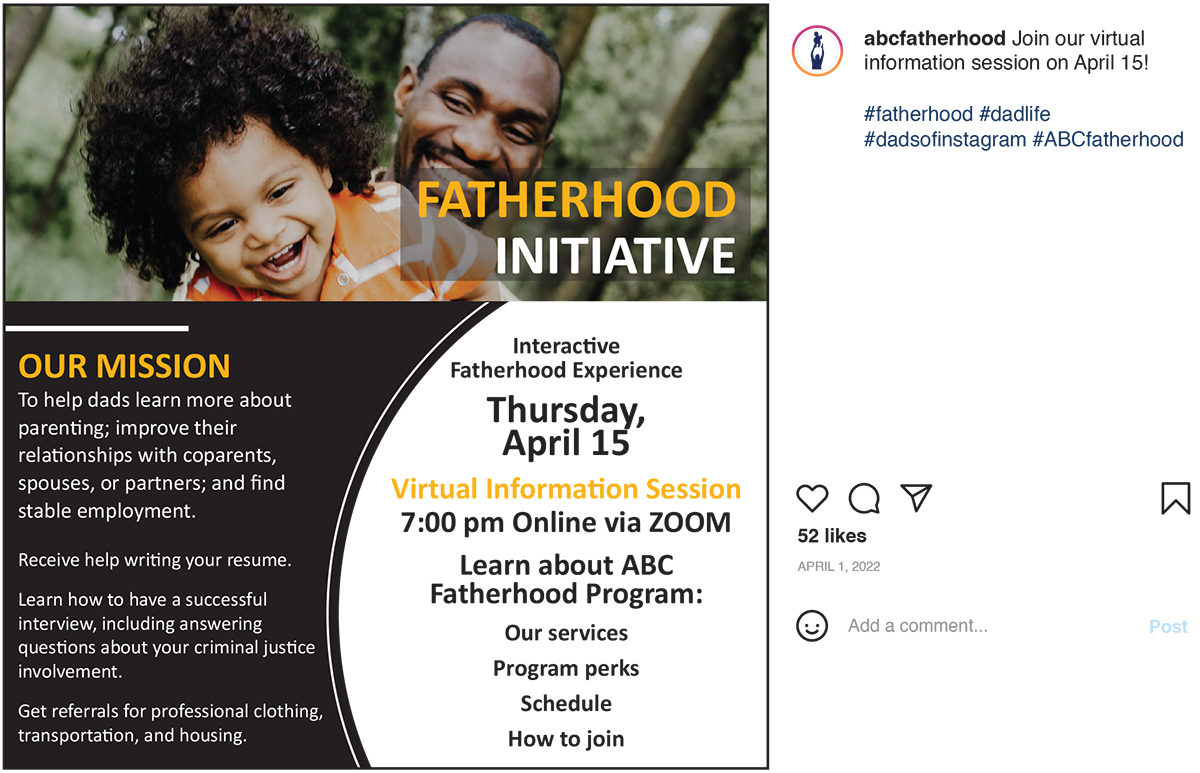
After (informed by behavioral science)
This social media post incorporates concepts from behavioral science that have been shown to strengthen the effectiveness of communications, with the aim of creating a more enticing, attractive, and readable communication that will increase the likelihood that fathers attend the online event.

Communication with participants is critical to the success of a fatherhood program. Programs communicate with fathers to encourage them to participate in a variety of offered services, remind them about upcoming activities, reinforce important information, check in if they miss a session, or inform them about other useful workshops and events. Highly effective communication materials may make fathers more likely to trust a program, respond to outreach efforts, engage with program services, or follow through on intended actions. When used successfully, evidence-based behavioral science techniques can help programs:
- Tailor communications to the target audience
- Emphasize the goal of a communication
- Address barriers that might prevent the recipient from understanding or acting on the information being communicated







